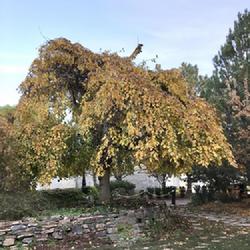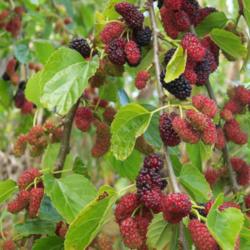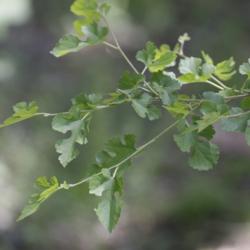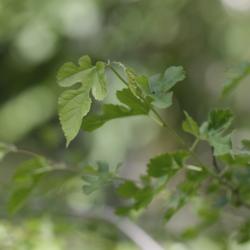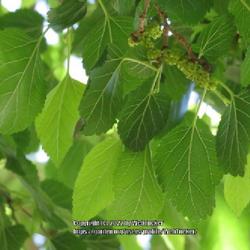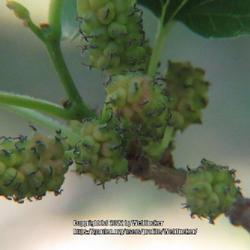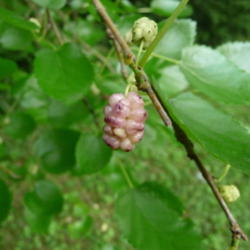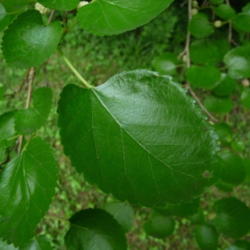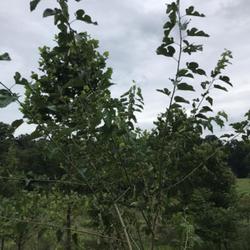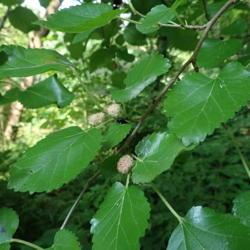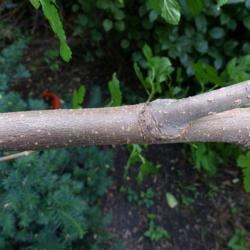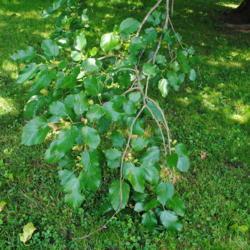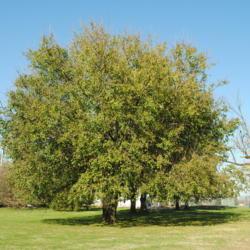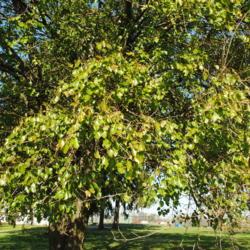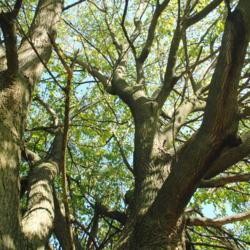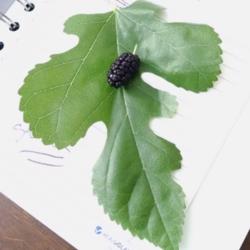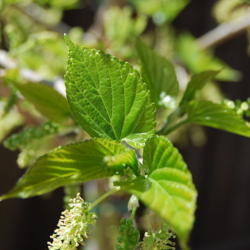Posted by
Bonehead (Planet Earth - Zone 8b) on Feb 19, 2014 12:14 PM concerning plant:
The white fruiting mulberry will produce seedless berries without a male tree close by. The berries are edible in either the green or white stage, and they are non-staining. This tree can also be maintained as a shrub because fruits are produced on new growth.
Posted by
ILPARW (southeast Pennsylvania - Zone 6b) on Jun 19, 2019 8:00 AM concerning plant:
This White or Common or Chinese Mulberry is a very common weed tree in the Midwestern and Eastern US. I actually have seen a few of this species, (only the female trees bear fruit), having white fruit, some can be pinkish, but most do have the dark red-purple fruit, which are tasty. The fruit clusters are 1/2 to 1 inch long, usually a little shorter than the Red species, and borne in June-July. The leaves are 2 to 7 inches long and up to 6 inches wide, and are shiny and smooth to just a little bit rough, and the leaf margins are not really sharp toothed but slightly rounded. The leaves range from being simple to two-lobed to three-lobed. It was originally brought over to the US to try to start a silk industry which did not work out. The original American Red Mulberry was susceptible to a leaf fungus that came with the Chinese species and is now rare and the American species was not so aggressive to multiply or to grow in poor or difficult soils. Actually, many trees are hybrids between the two species usually with more Asian in the mix than American. There are good number of cultivars of Common Mulberry and hybrids that are grown for their fruit. I think the best hybrid is one that is mostly American in its make-up that is called 'Illinois Everbearing.' I definitely don't recommend this Asian species for any landscapes.
Posted by
scvirginia on May 14, 2021 11:39 AM concerning plant:
I grew a found seedling in a pot out in the yard for a year to see what it was. It grows very quickly.
I'd read about the leaf shape for Morus species being variable, and since that wasn't the case with my young plant, I started thinking it was something else. Luckily, a botanist looked at some photos I sent him, and set me straight. White Mulberry.
The leaves of young mulberries may not be variable at all, apparently, but a good way to ID one is that they have bright yellow roots. I think the leaves are very pretty, but I don't want to grow this invasive plant, and am glad I kept it in a pot. Buh-bye!
Posted by
molanic (IL - Zone 5b) on Jun 22, 2020 11:28 AM concerning plant:
From what I've read you can differentiate Morus alba from Morus rubra by looking at the the top and bottom texture of the leaves. Morus alba leaves are glossy on top and not fuzzy on the underside. The fruit color and leaf shape are very variable though. Morus alba usually has white or light pink fruits when ripe, but some varieties like Morus alba tatarica (Russian Mulberry) turn black. The fruit of Morus alba are usually a lot shorter than those of Morus rubra also.
